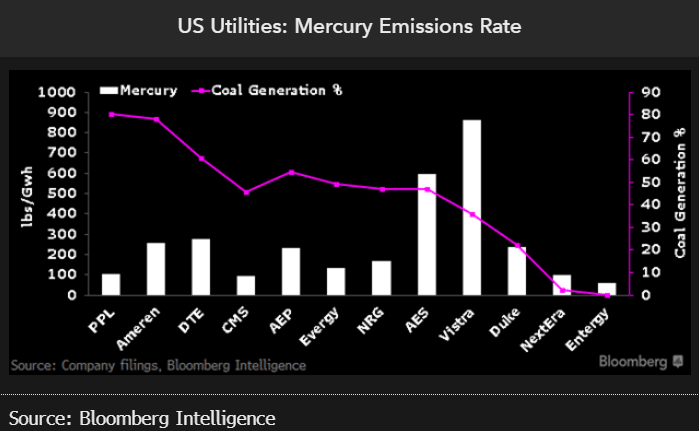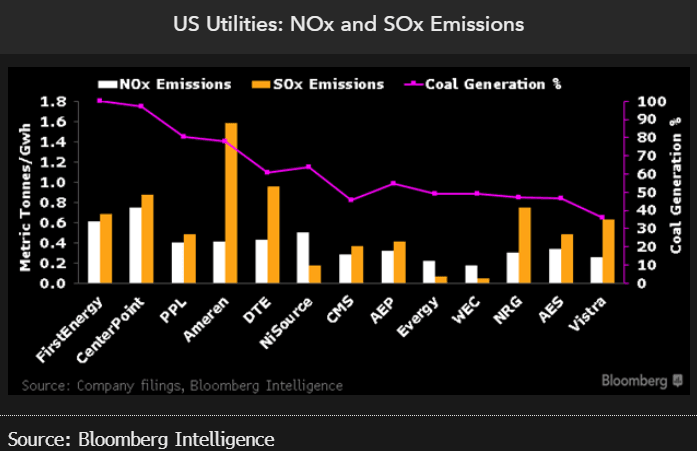New pollution limits putting additional costs on coal power
This analysis is by Bloomberg Intelligence Director of US ESG Research Eric Kane and Bloomberg Intelligence Associate Analyst Melanie Rua. It appeared first on the Bloomberg Terminal.
The US electric utilities industry is estimated to spend about $230-$330 million to comply with new mercury limits proposed by the EPA. Meanwhile, the final “good neighbor” provision of the Clean Air Act could result in additional costs for power generators that rely on coal.
EPA proposes tighter mercury limits for coal-fired plants
The EPA’s proposal to further limit emissions of non-mercury hazardous air pollutants (HAP) from coal-fired power plants and lower mercury-emissions limits on lignite-fired sites by 70% is projected to cost the industry $230-$330 million. The new rule would strengthen the Mercury and Air Toxics Standards (MATS), which the agency credits with a 90% reduction in mercury emissions from power plants, compared with 2010 levels.
American Electric Power reduced its mercury intensity 25% from 2019-21. The company invested more than $9 billion in environmental controls related to the Clean Air Act from 2000-21, which resulted in a 97% reduction in mercury emissions since 2001. Peers with high dependence on coal generation, including AES, Ameren and Vistra, could face similar risks.

Significant deviation in air emissions points to risk
The EPA’s “Good Neighbor” provision of the Clean Air Act, which limits downwind nitrogen-oxide (NOx) air pollution may cost utilities $910 million annually from 2023-42. The proposed rule targets a 50% reduction in NOx emissions from the power sector across 23 states by 2027, compared with 2021 levels, to maintain the 2015 ozone National Ambient Air Quality Standards (NAAQS). Companies in our peer set continue to demonstrate significant variations in emissions intensity vs. their power output. Ameren, DTE, FirstEnergy and CenterPoint are above the median and operate power plants in states covered by the Cross-State Air Pollution Rule, an EPA mandate to curb emissions.
Companies could face added compliance costs if they need to install scrubbers, retire coal-fired power plants or purchase emissions allowances.
